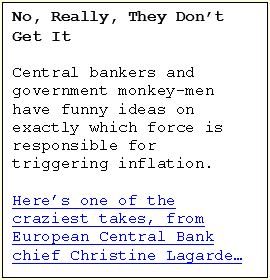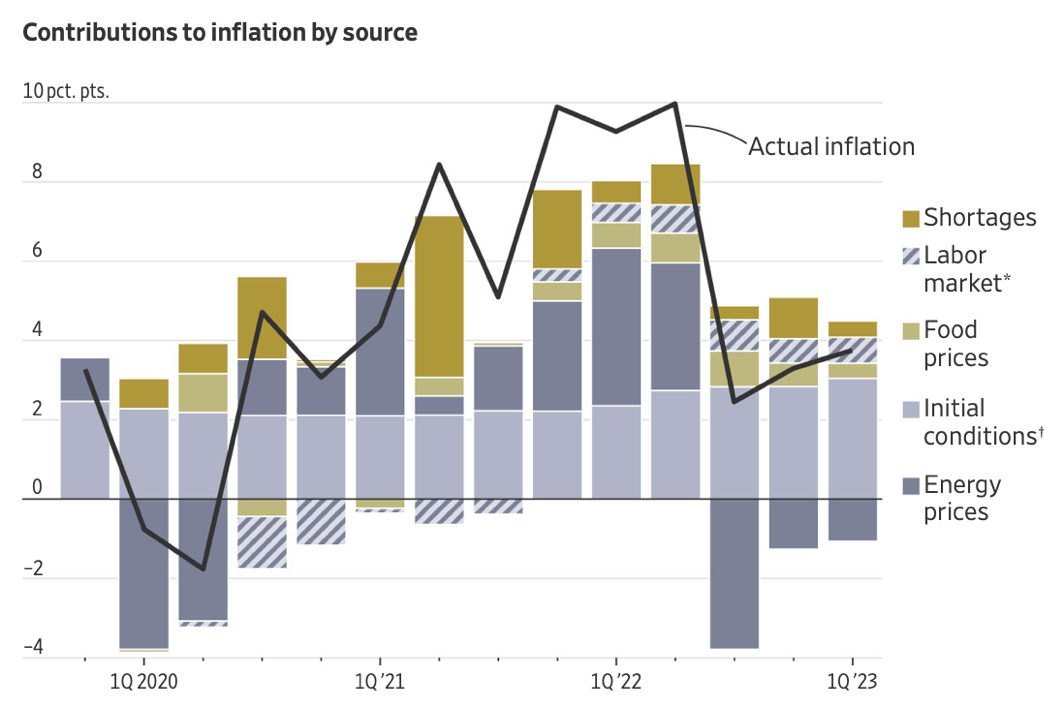Postcards from the florida republic: An independent and profitable state of mind.
Forget the “dual mandate” you learn about in high school social studies - the entire purpose of the Federal Reserve is to hide the very inflation they influence.
For roughly 17 years, the Fed never openly admitted it engaged in “inflation targeting” starting in 1993. It took until 2010 when then Fed-Chair Ben Bernanke admitted this process in a speech.
(Interestingly, back in 2003, Bernanke discussed other central banks engaging in the practice with no mention of the Fed’s behavior.)
Inflation targeting consists of using the central bank’s open market operations to push inflation higher to a specific target, about 2% per year. The Fed engaged in this targeting process from 1993 until 2020. Through this lens, it’s easy to understand why the market screamed higher from 2008 to 2021 – a direct result of the Fed’s actions.
But something dramatic happened in 2020: the COVID-19 crisis.
After state governments shut down businesses, Congress and the Fed injected trillions of dollars into the economy via stimulus, open market operations, and more.
Inflation screamed higher; it went ballistic.
For most of us, it was no surprise, but it sure seemed to take the political classes unawares. Here’s why…
“Transitory” – I Don’t Think It Means What You Think It Means
Central bankers and Janet Yellen said inflation would be “transitory” – yet continued buying bonds through March 2022. They were clearly wrong. When asked why inflation remained higher, they blamed everyone except themselves. They blamed corporations, supply chains, food prices, and labor costs.
They never tackled the root cause of the crisis. Until… now?
 In June 2023, government continued to cover up traces of its haphazard experiments in monetary and fiscal policy.
In June 2023, government continued to cover up traces of its haphazard experiments in monetary and fiscal policy.
The Brookings Institution – a thinktank that does its best to deflect any blame from the White House and Congress – wrote an insufferable paper to blame inflation on other matters.
You’ll never guess who wrote it?
Why, none other than former Federal Reserve Chairman Ben Bernanke, of course…
Devoid of irony, he asked a question (as opposed to actually trying to answer one)
“What caused the United States’ pandemic-era inflation?”
The question above is the title of a 38-page (not a typo - thirty-eight pages) working paper by Bernanke and Olivier Blanchard, a senior fellow at the Peterson Institute for International Economics.
There are 30 pages of explanation and eight pages of graphs and equations. Terms like “dependent variables” and “R-squared.”
The paper is full of jargon like this; the reader is bombarded with it.
But there’s one thing missing from the Bernanke-Blanchard report…
Money. Money isn’t mentioned at all. Not even once. In the entire paper.
You’ll be shocked – shocked - to learn inflation wasn’t caused by the government. And it wasn’t the uptick in wages. It was the supply shocks caused by the pandemic.
Well, sure – that makes sense at first. But can I please ask a question?
Who shut down the economy? It wasn’t the businesses and factories that did so? Wasn’t it… the government that shut ‘em down?
Never mind that… never mind that.
When you look at the chart below, you’ll see how Bernanke & Co. blame inflation by source. Shortages and labor play a bit of a role. Do you notice, however, that one thing is missing here?

Something significant is missing: The actual money itself.
How in the hell can you increase the money supply and print money at levels never witnessed before, and not blame the Economics 1010 idea of “too much money chasing too few goods,” but instead blame it on “shortages.”
There Is Madness in the Details
This can be explained, however, in a different way: The money supply (M2) exploded.
This is basic monetary analysis: Each year, the M2 needs to increase by about 4% to 5% a year to reach the Fed’s target of 2%. That was the lesson of Bernanke’s tenure after 2009 when the Fed bought assets and injected capital into the system.
The M2 increased by 15% alone in the three months following March 2020. If you’ll recall, Neel Kashkari, president of the Minneapolis Fed, appeared on 60 Minutes and said that the Fed had “plenty of money.”
We had about three years’ worth of M2 growth in 90 days.
But the money supply wasn’t done.
By February 2021, one year after the COVID selloff started to accelerate, M2 was up 27%.
There was a 19% increase in M2 in 2020. There was another 16.3% increase the following year.
This isn’t freaking rocket science.
When you increase the money supply by those outrageous levels, you get – ta-da! - too much money chasing too few goods. There is still a lot of that money supply that must still cycle through the system, and that is why we are not done with inflation. In fact, we’re likely to face another bout of this in the future – most likely after the Fed starts to cut rates in the next 18 months.
Meanwhile…
It’s interesting that Bernanke’s focus is on shortages. Because we haven’t had a very robust supply-side response to the pandemic and the ensuing economic “situation,” (to use a polite term) in the United States.
If shortages are the problem, you’d think that we’d do more than just subsidize politically connected industries instead of an all-of-the-above approach. We’d focus on producing more energy, more food, and more resources. But we can’t because the political class is too invested in the Great Green Transition…
And if shortages are the problem, then why are we continuing to raise regulatory costs on everything in the United States?
Economist Casey Mulligan discovered that regulatory costs per family fell by roughly $2,000 per family from 2016 to 2020.
In the last three years, these costs have exploded by $5,019 per year. That’s an inflationary issue, isn’t it?
It will be for the foreseeable future as governments continue to place more and heavier thumbs on the scale in every industry.
 More on that trend later today…
More on that trend later today…
Garrett Baldwin
Florida Republic Capital (Available on Substack)
About the Author
Garrett Baldwin is a globally recognized research economist, financial writer, consultant, and political risk analyst with decades of trading experience and degrees in economics, cybersecurity, and business from Johns Hopkins, Purdue, Indiana University, and Northwestern.



